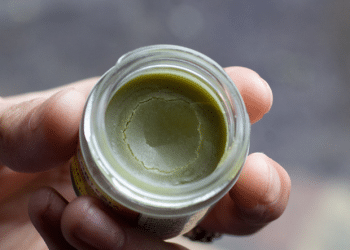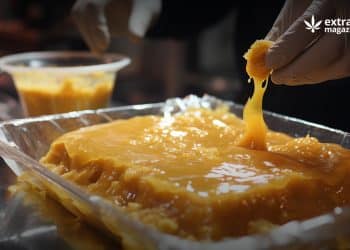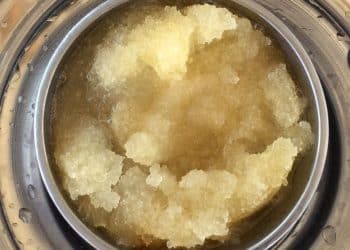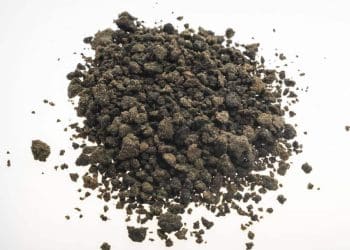Turmeric is having a renaissance in the health and supplement world. Its primary active ingredient, curcumin, is booming in popularity thanks to its medicinal value, its delicious flavor, and its bright color. [1] Though the plant has been utilized for thousands of years across Asia, as both a medicine and as a seasoning, scientific applications are helping to keep the plant relevant in today’s health conscious society. Whether the intended use is to add a little flavor to your recipes, find an organic alternative to multiple over the counter medications, or to try something new, turmeric may be a great source for any of this. With a few simple steps, extracting your own curcumin from turmeric has never been easier. Doing so can lead to improved health for a more conscious consumer, while simultaneously minimizing any negative side effects.
Making your own curcumin extraction from home is both simple and economic. It is often paired with piperine, which is the active ingredient of black pepper, to potentiate turmeric’s effects. Here is what you’ll need:
- A high-powered blender or food processor;
- Cloth for filtering (any fabric will work for this–an old pillowcase is perfectly fine);
- Large cup or jar with lid;
- 95% alcohol (or glycerin for an alcohol-free preparation).
Making the Tincture
The first step in this process is to take fresh turmeric root and chop it into small chunks. Then blend the chunks in a high-powered blender or food processor. Add some of the alcohol or glycerin to the pulp and continue to blend until the mixture appears to not change consistency. You want it to be as finely blended as possible for the next step.
Then strain the mixture with the cloth, wringing out all the liquid from the pulp. After doing this, pour the extract into a dark tincture bottle or a jar. Make sure to keep the mixture out of the light at all times because sunlight can break down the contained beneficial compounds.
This extract lasts a long time and can be taken 2-3 times per day. Just a few drops into fruit juice or water is all you need for a single dose. It is as simple as that!
What is the History of Turmeric?
Though turmeric may seem like the newest health trend, its use dates back more than 4500 year. [2] The earliest recorded use goes back to the Ayurvedic medicinal group near modern day New Delhi in India. The word Ayurvedic translates to “the science of life,” which describes both the medicinal and culinary value turmeric brought to their subculture. In addition to frequent writings from the time period, scientists found residue on multiple artifacts that included mixtures of turmeric, ginger, and garlic, the earliest of which dates back to the year 2500 BCE.
Ginger and garlic may have added to the flavor of the mixture, but the Ayurvedic used turmeric for several medicinal purposes. Their practitioners believed that inhaling the fumes of burned turmeric could clear congestion, and a curcumin paste was often applied to the skin to treat skin conditions ranging from cuts and bruises to chickenpox.
Adding to the flavor of their food, the Ayurvedic community also saw the value turmeric could bring to relieving gastrointestinal distress. To this day, India remains the largest producers of turmeric. Considered a sacred spice, turmeric is now frequently used as a cosmetic dye for special occasions like weddings.
As time passed, more cultures saw the value of this golden spice, and from India, the root slowly expanded outward. To the east, records indicate that curcumin was used in traditional Chinese medicine by the year 700 AD. From there, it is believed that traders brought the spice to other Southeast Asian nations like Thailand, the Philippines, and Malaysia. To the west, turmeric traveled as far as West Africa, where it goes by many names. The Yoruba people of Nigeria and Benin call turmeric “Ata ile pupa,” who use the spice as both a dye and for medical benefits. [3] The Lugunda people of Uganda call it “Haldi” where farmers typically grow it to be used in traditional recipes. [4] The Kinyarwanda people of Rwanda also grow turmeric, calling it “ikenzari” using it in similar ways.[5]
The reason turmeric thrives across these regions has to do with their environmental conditions. All of these locations have subtropical climates, with an average temperature of around 20 degrees Celsius, and the constant rainfall provides turmeric the water that it needs to grow sufficiently.
The Secrets of DIY Turmeric Extraction
While it is possible to buy turmeric in the form of various supplements, this may not be ideal for most users. Buying curcumin as a powered or pill supplement does not provide enough transparency as to how much additional plant material may still exist in the extract. Considering it is a simple process to create extracts at home, discerning users may prefer to do so to not only increase the curcumin purity, but also lower their cost basis as well. Additionally, users may find that extracting their own curcumin at home allows them to better customize the finished result to ascribe to their intended uses better.
There are several ways to create curcumin extract from turmeric roots at home, but the most effective way can be done with minimal effort. [6] First, it is important to break down the turmeric root into the smallest possible pieces to maximize the amount of curcumin extracted. Doing this increases the surface area to volume ratio within the solvent, and can lead to a higher concentration in the finished product.
Some people find cutting the root with a knife to be effective, but it is faster and more efficient to use a food processor or blender. Once the root is broken down into the smallest pieces possible, it is necessary to soak the organic material in either high proof ethanol or glycerin for multiple days. These solvents not only break down the material, but they absorb the curcumin into the solution in a process called maceration.
Depending on how concentrated the finished product needs to be, the solution should rest for between two and five days. Once this saturation period has passed, the remaining plant material needs to be filtered out of the extract. This can be done with a coffee filter, metal sieve, or sturdy paper towel, with a jar underneath to capture the curcumin extract. This tincture is called turmeric glycerite, and it can be frozen for up to two years, though many users reported it is most fresh when used within six months.
Other Ways to Consume Turmeric?
Maceration is certainly the most efficient way to extract the highest concentration of curcumin from turmeric while doing the least amount of work. Turmeric glycerite can easily be put in capsules or taken orally on its own, but this may not be ideal for all turmeric uses. For those who don’t want to wait for several days, it is possible to take the powdered turmeric root directly, but it is worth noting that there will be additional plant derived compounds included along with the curcumin. Like many of the cultures across Africa and Southeast Asia, this plant material serves as a spice that can be added directly into a variety of foods and drinks. Turmeric has an earthy flavor with a touch of sweetness, spice, and hints of ginger. As a result, the golden spice is a common feature in many Southeast Asian dishes. Some notable examples include Indian curries, Singaporean noodles, Thai soups, and American mustard or dill pickles.
For users who find the flavor too overwhelming, it is also commonly mixed in a yogurt, smoothie, or tea to cut the flavor with something sweeter. One of the most effective ways to incorporate curcumin into food is to make piperine, a mixture of turmeric root and black pepper. Not only does this add another flavor profile to any of the previously listed recipes, but studies show that piperine increases medical benefits of curcumin as well. The combination of these two spices work together as a bioenhancer for multiple therapeutic drugs and phytochemicals and can help increase their absorption rate by up to 2000%.[7]
 What are the Medical Benefits of Turmeric?
What are the Medical Benefits of Turmeric?
Multiple studies have shown that turmeric is a powerful anti-inflammatory, an antioxidant and a treatment for the following diseases:
- Arthritis;
- Diabetes;
- Infection;
- Oral health;
- Cancer;
- Digestive disorders;
- Liver disease;
- Alzheimer’s disease;
- Skin conditions.
Aside from its applications in food, turmeric’s largest application is its medicinal properties. The first documented uses of curcumin relied on both culinary and therapeutic purposes, but today’s documented benefits have increased tenfold. For starters, many people who use curcumin do so for pain management. One study, conducted in 2014, found that turmeric was indistinguishable when it came to managing minor aches and pains when compared to over the counter painkillers like ibuprofen, acetaminophen, or aspirin. [8] When looking at one week, two week, and four week timelines, the study found turmeric to be 95% as effective at treating pain as their synthetic competition, but the curcumin possessed two major advantages. First, the group using the turmeric reported less joint stiffness over the four week timeline. This aligns with, additional studies have found that turmeric can help counter inflammation and may be a useful treatment for arthritis. [9][10]
Beyond relieving joint pain, other studies have found that curcumin may also help prevent muscle soreness following exercise. [11] This is good news for the users that may be more physically active, as the muscular relief may contribute indirectly to overall health by allowing for more exercise overall. The second difference that this study found between turmeric and painkillers is that the turmeric users reported less abdominal pain throughout the four-week period. This is likely attributed to curcumin’s strong antioxidant properties, but the reasoning as to why is slightly more complex. [12] Antioxidants are occasionally used as a general, health industry buzz word that suggests better health without defining how they work in the body. In turmeric’s case, the benefits are well documented and quantifiable for several of the body’s organs.
When it comes to the digestive system, a large part of the abdominal cavity, there are various possible explanations for how curcumin’s antioxidants can relieve pain in that part of the body. [13] Digesting food is a complex process that relies on multiple organs working in tandem. For starters, turmeric serves as a natural laxative. This means that users report increased rate of bowel movements, which may limit abdominal discomfort by clearing any obstructions or gas caught in the intestines, or by generally aid the food through the system. This can also be problematic, though, as excessive turmeric consumption may cause diarrhea.
Beyond the laxative property, curcumin has also been shown to stimulate bile production within the gallbladder. [14] Bile helps to digest lipids, or fats. When fats are broken down into smaller components, it makes it easier for the liver and kidneys to do their jobs as well. [15] These two organs are both responsible for filtering toxins in the body, and if the fats the body absorbs are smaller, they can be processed and filtered at a faster rate.
After the fats make their way through the liver and kidneys, they can re-enter the bloodstream in the form of cholesterol. Turmeric has been shown to lower cholesterol in the bloodstream, which also contributes to general pain relief by increasing blood flow. Lower cholesterol may also play a role in curcumin’s ability to increase the metabolic rate of its users. While it has not yet been documented in humans, this increased metabolic absorption has proven beneficial in treating diabetes in rats. [16] This translates to aiding another organ within the abdominal cavity, as diabetes comes when the pancreas stops producing insulin. For the purposes of this particular study, a clear cause of the abdominal discomfort for the over the counter painkiller users was not identified. That being said, it is possible that turmeric could be relieving abdominal pain in several ways.
Considering the combined laxative, antioxidative, digestive, lipolysis processes that may aid stomach, intestines, liver, kidneys, gallbladder, and pancreas, all while improving blood flow by lowering cholesterol, it is possible that turmeric’s side effects create a powerful combination to relieve abdominal pain.
Beyond all of these abdominal advantages, curcumin’s antioxidants also provide a few more medical benefits that fall outside the scope of this study. Evidence suggests that turmeric’s antioxidants may effectively help to fight against cancer. [17] At this point, the evidence is corollary, but studies do indicate that turmeric consumption may inhibit cancer growth and may even shrink tumor size over long periods of time. With that being said, it is unclear whether this is due to the antioxidants present in curcumin or some other unknown aspect of turmeric that could cause these effects in some other, unknown way.
Beyond cancer and the digestive system, turmeric’s antioxidants have proven benefits the eyes. [18] This golden spice has been used to treat both cataracts and glaucoma, both of which have been known to cause blindness, but for different reasons. Cataracts occur when the intraocular lens in the eye clouds over to the point where vision is blocked and lenses need to be removed. Turmeric’s antioxidants can inhibit this lens opacification, delaying the individual’s loss of sight due to the clouded lenses. When it comes to glaucoma, evidence suggests that curcumin may help protect retinal ganglion cells, which connect to the ocular nerve in the brain. [19] Over time, the oxidative process degrades the optic nerve, which severs their connection to the brain causing glaucoma. Combined, the antioxidants from turmeric help to protect users’ vision both in front and back of the eye. Both of which are essential for people to keep their sight.
Finally, there is one last organ that curcumin has quantifiable benefits for. Turmeric has been shown to stimulate neurogenesis, which benefits brain development. [20] It does this by stimulating embryonic neural progenitor cells in the hippocampus, which means it helps make new cells grow in the part of the brain that regulates emotion, learning, and memory. A healthy brain is always admired, but it is possible that this could lead to lowered risk of dementia, Alzheimer’s, or the treatment of other psychological disorders. At this time, though, there is not enough data to fully connect this hypothesis to turmeric consumption, and more studies will be needed to prove a connection exists.
What are the Risks Associated Turmeric?
Considering the numerous medical benefits associated with curcumin, it is hard to imagine that there are any downsides at all to this wonderful spice. It is true that the benefits do outweigh the risks, but there are some significant dangers that are worth considering, especially when consuming large doses.
While the previous section showed turmeric to be more effective at managing pain compared to over the counter painkillers, this issue becomes complicated when combined with other medications. Patients who are undergoing chemotherapy should consult with their doctor before starting a curcumin regiment. Some research indicates that turmeric can effectively augment chemotherapy treatments, but other research suggests that it may also inhibit its effectiveness.[21][22] These differing results are likely due to the complexity associated with each individual’s diagnosis.
Depending on a patient’s needs, curcumin use should be considered on a case by case basis. An even more realistic threat for turmeric uses comes with combining them with blood thinners. [23] Due to the lowered cholesterol levels in the bloodstream described in the previous section, large doses of curcumin can have a blood thinning effect. On their own, either blood thinners prescribed by a doctor or turmeric is likely not to be harmful, and may provide healthy improvements for many people. When combined, though, their effects may compound into an overwhelming effect that could have disastrous consequences.
Beyond that, there are several other risks that can mostly be avoided by moderating and controlling the dosage. As previously stated, the laxative quality of curcumin could lead to increased diarrhea, but large doses have also been connected to increased regularity of kidney stones. [24]
For a small percentage of people, it is possible to have an allergic reaction to curcumin. [25] One study estimated that this allergy could affect 3-5% of the population, but it is only life-threatening in the most severe cases. [26] Common curcumin allergy side effects include hives, swelling of the lips, face or throat, and, in the most severe cases, difficulty breathing. If these symptoms are present after consuming turmeric, it is vital to consult a medical professional immediately.
To avoid both of these problems, all the user needs to do is space out their consumption into smaller doses taken multiple times per day. This allows the body to more effectively process the curcumin, and thus avoid these negative consequences.
Finally, while this may not be a medical risk, it is worth noting that turmeric is commonly used as a dye. So when making curcumin extract at home, there is a possibility that the turmeric could stain clothes, countertops, or dishes, giving them a bright yellow color. To avoid this, the easiest solution is to wear older clothes or rubber gloves, and to use disposable materials like paper towels or coffee filters for the extraction process.
References:
- Chattopadhyay, Ishita, et al. “Turmeric and curcumin: Biological actions and medicinal applications.” Current science (2004): 44-53.
- Prasad, Sahdeo, and Bharat B. Aggarwal. “Turmeric, the golden spice.” Herbal Medicine: Biomolecular and Clinical Aspects. 2nd edition (2011).
- Olorunnisola, O. S., A. Adetutu, and A. J. Afolayan. “An inventory of plants commonly used in the treatment of some disease conditions in Ogbomoso, South West, Nigeria.” Journal of ethnopharmacology 161 (2015): 60-68.
- Corcolon, Elvira A., Antonio C. Laurena, and Maribel L. Dionisio-Sese. “Genotypic characterization of turmeric (Curcuma longa L.) accessions from Mindanao, Philippines using RAPD markers.” Procedia Chemistry 14 (2015): 157-163.
- Nzigidahera, Benoît, et al. “Habitats du Parc National de la Ruvubu au Burundi.” Guide sur la flore pour le suivi de la dynamique des habitats du PNR (2020).
- Kotra, Venkata Subba Rao, Laishram Satyabanta, and Tridib Kumar Goswami. “A critical review of analytical methods for determination of curcuminoids in turmeric.” Journal of food science and technology 56 (2019): 5153-5166.
- Db, Mhaske, S. Sreedharan, and K. Mahadik. “Role of piperine as an effective bioenhancer in drug absorption.” Pharm Anal Acta 9.7 (2018): 1-4.
- Kuptniratsaikul, Vilai, et al. “Efficacy and safety of Curcuma domestica extracts compared with ibuprofen in patients with knee osteoarthritis: a multicenter study.” Clinical Interventions in aging (2014): 451-458.
- White, C. Michael, et al. “Oral turmeric/curcumin effects on inflammatory markers in chronic inflammatory diseases: a systematic review and meta-analysis of randomized controlled trials.” Pharmacological research 146 (2019): 104280.
- Daily, James W., Mini Yang, and Sunmin Park. “Efficacy of turmeric extracts and curcumin for alleviating the symptoms of joint arthritis: a systematic review and meta-analysis of randomized clinical trials.” Journal of medicinal food 19.8 (2016): 717-729.
- Meamarbashi, Abbas. “Herbs and natural supplements in the prevention and treatment of delayed-onset muscle soreness.” Avicenna journal of phytomedicine 7.1 (2017): 16.
- Braga, Mara EM, et al. “Comparison of yield, composition, and antioxidant activity of turmeric (Curcuma longa L.) extracts obtained using various techniques.” Journal of agricultural and food chemistry 51.22 (2003): 6604-6611.
- Thavorn, Kednapa, Muhammad M. Mamdani, and Sharon E. Straus. “Efficacy of turmeric in the treatment of digestive disorders: a systematic review and meta-analysis protocol.” Systematic reviews 3 (2014): 1-6.
- Kim, Min-Sun, et al. “Effect of tumeric (Curcuma longa) on bile acid and UDP-glucuronyl transferase activity in rats fed a high-fat and-cholesterol diet.” 생명과학회지 22.8 (2012): 1064-1070.
- Gholami-Ahangaran, Majid, Nader Rangsaz, and Shahrzad Azizi. “Evaluation of turmeric (Curcuma longa) effect on biochemical and pathological parameters of liver and kidney in chicken aflatoxicosis.” Pharmaceutical biology 54.5 (2016): 780-787.
- Narayannasamy, Arun, Nalini Namasivayam, and Kavitha Radha. “Effect of turmeric on the enzymes of glucose metabolism in diabetic rats.” Journal of herbs, spices & medicinal plants 10.1 (2003): 75-84.
- Hutchins-Wolfbrandt, Amanda, and Anahita M. Mistry. “Dietary turmeric potentially reduces the risk of cancer.” Asian Pac J Cancer Prev 12.12 (2011): 3169-73.
- Radomska-Leśniewska, Dorota M., et al. “Therapeutic potential of curcumin in eye diseases.” Central European Journal of Immunology 44.2 (2019): 181-189.
- Buccarello, Lucia, et al. “Retinal ganglion cell loss in an ex vivo mouse model of optic nerve cut is prevented by curcumin treatment.” Cell Death Discovery 7.1 (2021): 394.
- Kim, So Jung, et al. “Curcumin stimulates proliferation of embryonic neural progenitor cells and neurogenesis in the adult hippocampus.” Journal of Biological Chemistry 283.21 (2008): 14497-14505.
- Kalluru, Hindu, et al. “Turmeric supplementation improves the quality of life and hematological parameters in breast cancer patients on paclitaxel chemotherapy: A case series.” Complementary Therapies in Clinical Practice 41 (2020): 101247.
- Somasundaram, Sivagurunathan, et al. “Dietary curcumin inhibits chemotherapy-induced apoptosis in models of human breast cancer.” Cancer research 62.13 (2002): 3868-3875.
- Edition, Pro. “Drug Interactions between turmeric and warfarin.”
- Tang, Minghua, D. Enette Larson-Meyer, and Michael Liebman. “Effect of cinnamon and turmeric on urinary oxalate excretion, plasma lipids, and plasma glucose in healthy subjects.” The American journal of clinical nutrition 87.5 (2008): 1262-1267.
- Shin, Hee Soon, et al. “Turmeric (Curcuma longa) attenuates food allergy symptoms by regulating type 1/type 2 helper T cells (Th1/Th2) balance in a mouse model of food allergy.” Journal of Ethnopharmacology 175 (2015): 21-29.
- Palaniappan V, Karthikeyan K. Turmeric: The Yellow Allergen. Indian Dermatol Online J. 2022 Oct 21;14(4):459-464. doi: 10.4103/idoj.idoj_340_22. PMID: 37521239; PMCID: PMC10373802.
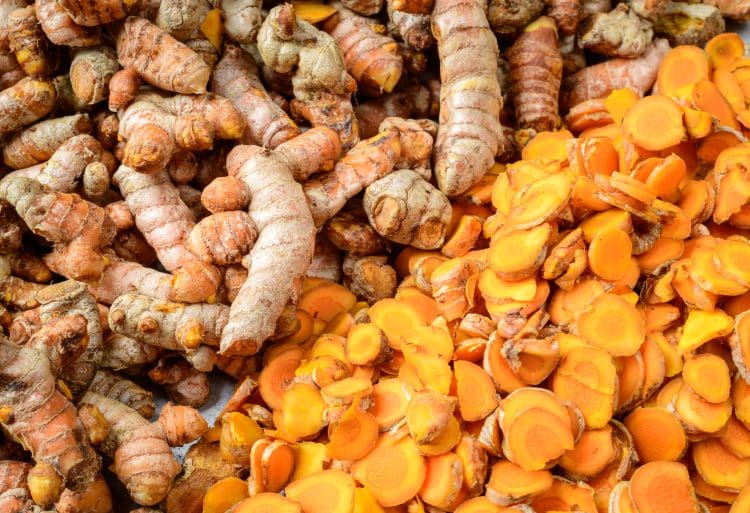
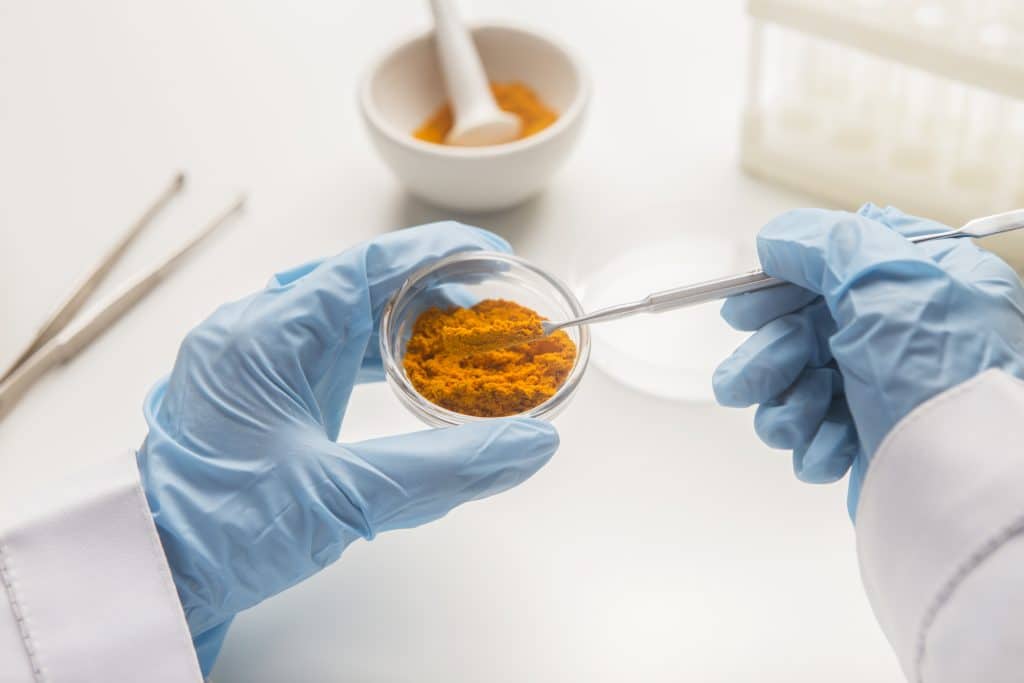 What are the Medical Benefits of Turmeric?
What are the Medical Benefits of Turmeric?